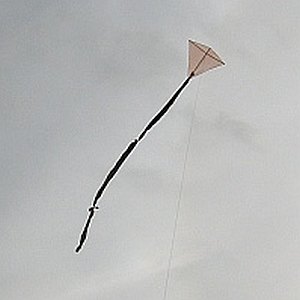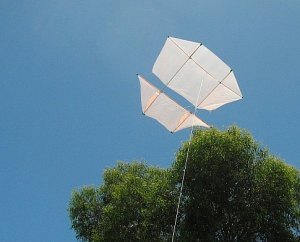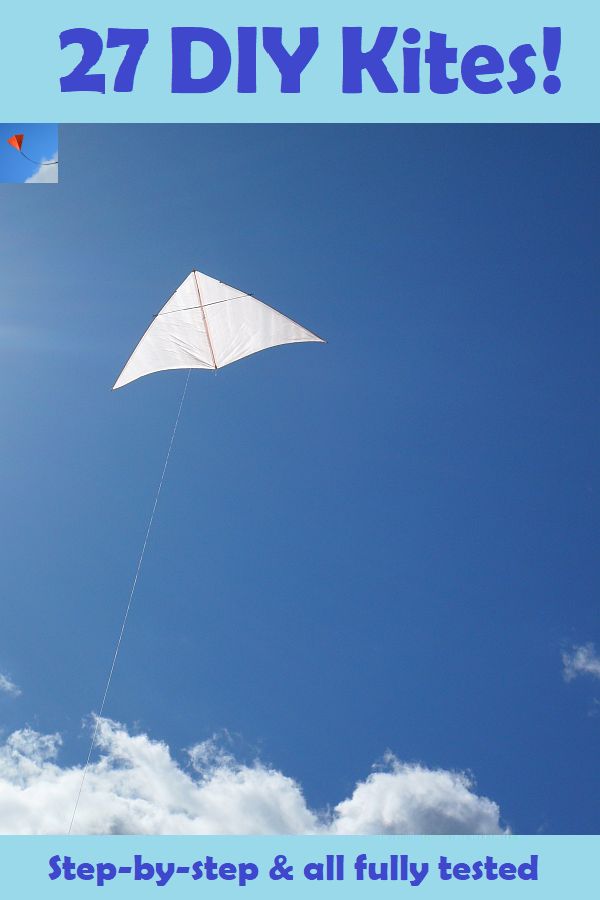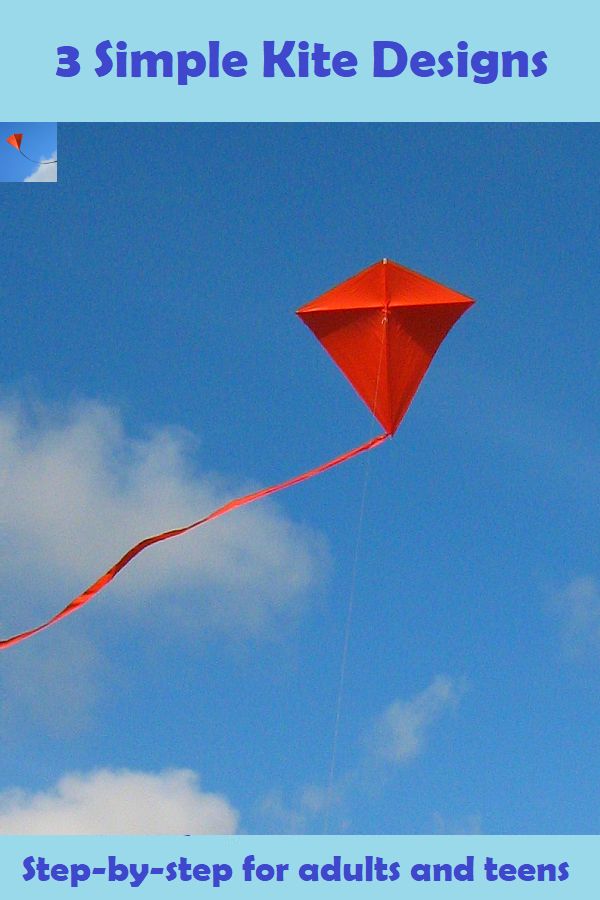- Home Page
- Kite Plans
MBK Kite Plans
An Alternative to Step-by-Step
Why build from kite plans? Well, if you've made a few kites before, it might seem a bit quicker and more convenient than wading through a list of step-by-step instructions.
 MBK 1-Skewer Diamond
MBK 1-Skewer DiamondWhether working from plans or going step-by-step, you're always free to substitute your own different materials or way of doing things, as you see fit. For example, you might use ripstop nylon instead of plastic, or artificial materials instead of wooden doweling for spars.
Just to give you a sense of the variety here:
Down in the next section is a photo of the dinky little 1-Skewer Diamond. It's a reliable easy-to-make little flyer. You can knock one of these up in minutes.
Further down this page is the Dowel Dopero.
With an upper and lower sail plus twin keels and a four-leg bridle, the dopero-kite design takes a lot more patience to complete. But in return, you have an attractive aircraft that likes to wander around directly overhead no matter how much line you let out! This happens in the right weather, of course.
Kite Plans Table
The links in the table below take you to plans and construction tips for the 1-Skewer, 2-Skewer, and Dowel version of each kite type.
Put a kite together, then go out and fly it really high! The bridle for each kite is made from the same line you intend to fly it on.
Talking about line:
If you're building from the Dowel Series kite plans, you'll need at least 30-pound flying line. Either Dacron or nylon is suitable.
Eventually, you might want to find somewhat lighter line for the 1-Skewer designs, since they struggle a bit if you have too much line out. I've tried polyester sewing thread, and it seems strong enough for these quite small kites!
New to this site? OK, let me explain about 1-Skewer, 2-Skewer, and Dowel series of designs. These simply refer to the basic building block of the kite.
Except for the delta, 1-Skewer Series designs are no wider than the length of a single 30-centimeter (12-inch) bamboo skewer.
Similarly, 2-Skewer Series designs are mainly constructed with two skewers joined end to end. Except for the delta, these designs are never more than two skewers wide from tip to tip.
All the Dowel Series designs except the delta are 1.2 meters (4 feet) from tip to tip. Also, the box designs are 1.2 meters in length.
PLANS by Type
+ pictures and videos
boxes (a bit harder)
 MBK Dowel Dopero poses
MBK Dowel Dopero posesNote: MBK 1-Skewer and 2-Skewer Series kites are made from thin 12-inch bamboo skewers, which come in packs of 100. The metric size is 30 centimeters long x 3 millimeters thick. Sometimes the thickness is just 2.5 millimeters, which works even better for the 1-Skewer designs.
Between these kite plans and the list of hints for each one, 90 percent of any kite's construction should be covered. If you're a "plan builder" then the remaining 10 percent shouldn't worry you!
Here are some tips for finding the area of a kite, if you need to do that for any of these designs.
I've used various kites from these three series to illustrate some points about kite bridles. Have a look if you're interested in this aspect of single-line kiting.
Finally, have you ever got the urge to scale up your favorite sparred design to some enormous size? It might pay to think twice! Read about scaling sparred kites here.
Wind-Speed Handy Reference
Light Air
1-5 kph
1-3 mph
1-3 knts
Beaufort 1
Light breeze
6–11 kph
4–7 mph
4–6 knts
Beaufort 2
Gentle ...
12–19 kph
8–12 mph
7–10 knts
Beaufort 3
Moderate ...
20–28 kph
13–18 mph
11–16 knts
Beaufort 4
Fresh ...
29–38 kph
19–24 mph
17–21 knts
Beaufort 5
Strong ...
39–49 kph
25–31 mph
22–27 knts
Beaufort 6
High Wind
50-61 kph
32-38 mph
28-33 knts
Beaufort 7
Gale
62-74 kph
39-46 mph
34-40 knts
Beaufort 8
Overall Goals
My ultimate goal was eventually achieved. That was to have a large collection of kite plans and instructions that had been refined and standardized through lots of building and flying! Small design changes often crept in as I experimented and improved the flying characteristics of these cheap kites. So you should have a great chance of success if you pick one of these as a project!
Finally, the kite drawings here were not intended for just printing off and enlarging. The result would be stretched a little in the horizontal or vertical direction. However, if you went ahead and built a kite from such a plan, I'm sure it would fly! Nothing a bit more tail and/or dihedral wouldn't fix, don't you think?
In the video below is our MBK Dowel Rokkaku in flight. This design is also a great thermal soarer like the dopero.






